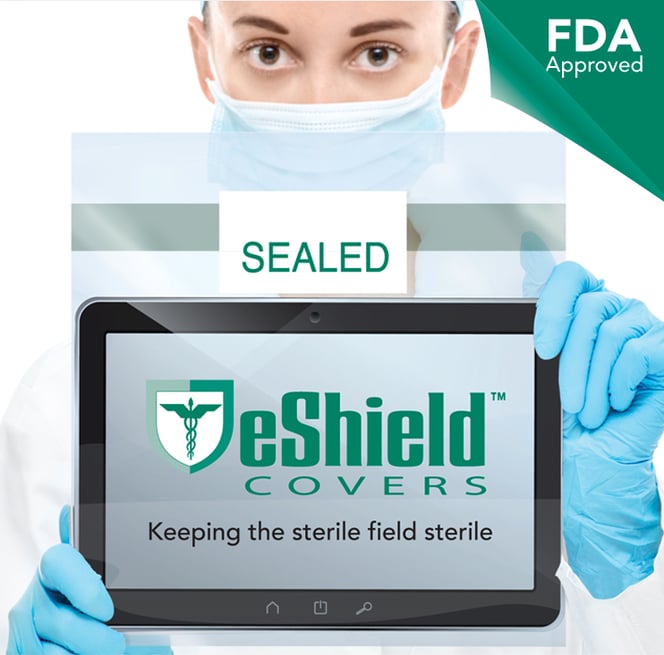
Many surgeons require photos of procedures for teaching purposes, real time consultation or for patient records. And the advent of Medical Information Technology is bringing many types of electronic devices: smartphones, tablets, digital cameras into areas of the hospital where they have been previously unseen, namely surgical suites.
With that comes many opportunities. AST Guidelines refers to it this way, “Cell phones/smartphones, tablets, personal digital assistants (PDAs) and other mobile devices (referred to as “mobile information technology [MIT]) that can perform the functions of personal computers including taking photos, uploading and downloading files, instant access to and ability to quickly distribute information, and ability to record and transmit events as they are occurring has quickly become assimilated into medical practice.”[1]
This conversation concerns the ability to take photos in the operating room and the things that need to be considered ranging from HIPAA Compliance to ways to get the best photos quickly to how to introduce a basically filthy device into the surgical suite without endangering patients and staff.
HIPAA COMPLIANCE
Enacted in 1996, the HIPAA Privacy Rule establishes national standards to protect individuals’ medical records and other personal health information and applies to health plans, health care clearinghouses, and those health care providers that conduct certain health care transactions electronically.[2]
It is the responsibility of the Healthcare Systems and healthcare providers to support and maintain HIPAA compliance. As Dr. David Craig, Medical Director at Spruce Health puts it, “HIPAA is about processes and systems. There is no such thing as a “HIPAA Compliant phone”, just as there is no such thing as a phone that is non-HIPAA-compliant.” It is up to the providers to make certain all equipment and personnel who operate the equipment adhere to the government guidelines.
TAKING CLEAR AND RELEVANT PHOTOS IN THE SURGICAL SUITE
As to the ability to take clear and relevant photos there are many things to consider. Stuart J. Fisher, MD, Orthopaedic Surgeon at Summit Orthopaedics and Sports Medicine covers a number of these in his article Bringing a Camera Into the OR – What you should know about taking intraoperative photos. He gives tips relating to ways to effectively handle the challenges of lighting and what it can do to color. He suggests different types of lenses for different purposes. He talks about camera selection and then discusses the actual taking of the photos…how it is generally done and his advice about who should take the photos.[3]
PROTECTING THE STERILE ENVIRONMENT
Maybe the most critical part of this conversation is addressing the issue of non-sterile devices in the surgical suite. Undoubtedly, you’ve heard the frightening statistics on germs found on cell phones. Cameras and tablets are no different. And with Surgical Site Infections being the most common type of Hospital Acquired Infections accounting for more than 20% of them[4], it is imperative that non-sterile devices be treated in a manner that does not contribute to that stat.
Here is what happens in many surgical environments.
The surgeon requires a photo. And though there may be a camera mounted directly above the operating table, the image required must be filmed from an alternate viewpoint.
A likely solution for the surgeon – Engage the help of the circulator to take the photos so that the surgery can continue without the glove changes needed if the surgeon is taking the photo. The circulator, in compliance with the surgeons’ wishes, leans over the sterile field to take the photo while things crawl to a stop.
There are a few basic problems with this…
#1 It is almost 100% sure that the surgeon is not going to get the photo desired the first time…and maybe not the second or third. That is frustrating, and time consuming AND operating room time is very expensive!
#2 Even worse, the circulator is not scrubbed…the camera is not sterile. That action puts the patient at increased risk for a Surgical Site Infection (SSI)
#3 And, if the surgeon does decide to take the photo, then glove changes are required. Again, that takes time. According to studies quoted in The Journal of Clinical Anesthesia the cost of operating room time is estimated at an average of $15 to $20 per minute.[5] And according to an article in OR Manager Magazine, that cost can average as much as $65.00 per minute,[6] that is not a thing to take lightly.
STERILE DRAPE/COVER – A GOOD SOLUTION
A good solution for this situation is a sterile drape - a disposable, single use sterile cover for the camera. As Dr. Fischer points out a good place for the camera is on the mayo stand. Utilizing sterile technique, the camera or smartphone can be placed in the sterile cover prior to surgery and placed along with the other sterile instruments on the mayo stand. That lets the surgeon take the photo desired, from the desired perspective, without requiring the assistance of non-scrubbed personnel which results in less time spent while eliminating the risk of contaminating the environment.
[1] AST Standards of Practice for Use of Mobile Information Technology in the Operating Room, October 10, 2015
[2] The HIPAA Privacy Rule, hhs.gov
[3] Stuart J. Fischer, MD Bringing a Camera into the OR January 30, 2014
[4]American College of Surgeons and Surgical Infection Society Announce New Guidelines for the Prevention and Treatment of Surgical Site Infections, December 1, 2016
[5] Journal of Clinical Anesthesia (2010) 22, 233-236
[6] OR Manager Magazine Firm policies and the right procedures tip the cost-benefit balance toward flip rooms, March 13, 2014

